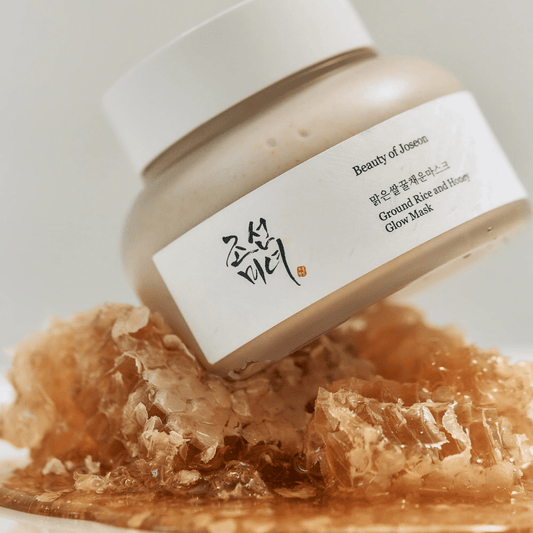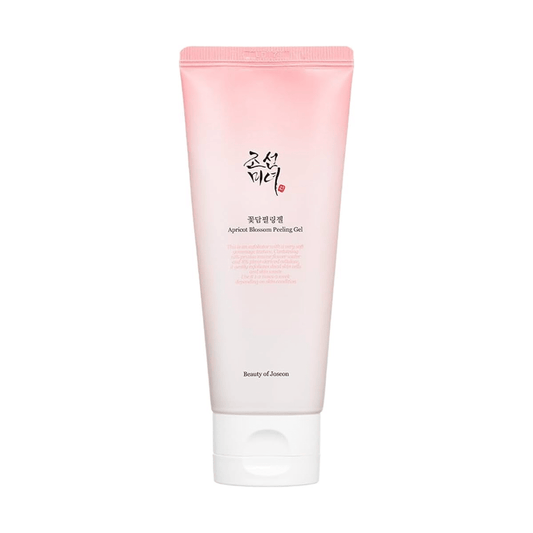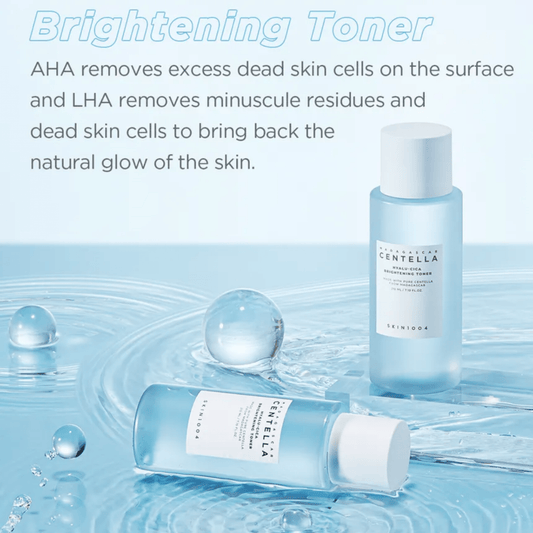Unveiling the Dynamic Duo: Cleansers + Exfoliators
In the realm of skincare, few combinations are as powerful and transformative as cleansers and exfoliators. Like a skilled detective and their trusty magnifying glass, these skincare heroes work in tandem to uncover your skin's true radiance. Let's embark on a journey through the world of cleansers and exfoliators, exploring their rich history, varied formulations, and the myriad ways they can revolutionise your skincare routine.
The Skincare Detectives: Defining Cleansers + Exfoliators
Cleansers are the first line of defence, diligently removing dirt, oil, and impurities from the skin's surface. Exfoliators, on the other hand, are the deep-dive specialists, sloughing away dead skin cells and unclogging pores to reveal the fresh, vibrant skin beneath.
Together, they form a powerhouse combination that addresses a multitude of skin concerns, from acne and blackheads to dullness and uneven texture. By incorporating both into your routine, you're not just cleaning your skin – you're paving the way for optimal skin health and creating the perfect canvas for the rest of your skincare products.
The Secret Agents: Key Ingredients Unveiled
The world of cleansers and exfoliators is rich with ingredients that work tirelessly to transform your skin. Let's meet some of the star players:
Alpha Hydroxy Acids (AHAs)
Think of AHAs as the gentle yet effective exfoliating agents. Glycolic acid and lactic acid are popular choices, working to dissolve the bonds between dead skin cells, revealing smoother, brighter skin underneath. They're like microscopic dancers, gracefully sweeping away dullness to reveal your skin's natural glow.
Beta Hydroxy Acids (BHAs)
Salicylic acid is the superstar of this category. It's oil-soluble, meaning it can penetrate deep into pores to clear out excess sebum and debris. For those battling acne or oily skin, BHAs are your secret weapon, working like tiny plumbers to unclog your skin's pipes.
Polyhydroxy Acids (PHAs)
The gentle giants of the exfoliating world, PHAs like gluconolactone offer a kinder approach to skin renewal. They're perfect for those with sensitive skin, acting like a soft-bristled brush to gently sweep away impurities without causing irritation.
Enzymes
Derived from fruits like papaya and pineapple, enzymes offer a natural approach to exfoliation. They work like nature's own exfoliating elves, gently nibbling away at dead skin cells to reveal the fresh skin beneath.
Surfactants
The unsung heroes of cleansers, surfactants like sodium lauryl sulfate and cocamidopropyl betaine are what give your cleanser its foaming action. They work like molecular magnets, attracting both oil and water to effectively cleanse your skin.
Finding Your Perfect Match: Skin Type Suitability
Just as every superhero has their ideal mission, different cleansers and exfoliators are suited to different skin types:
- Oily Skin: Rejoice in gel cleansers and BHA exfoliators. They're your allies in the battle against excess oil and clogged pores.
- Dry Skin: Embrace creamy cleansers and gentle AHA exfoliators. They'll cleanse and renew without stripping your skin of its precious moisture.
- Sensitive Skin: Seek out mild, fragrance-free cleansers and PHA exfoliators. They're the gentle guardians your skin needs.
- Combination Skin: Mix and match! Use a gentle cleanser all over and target oilier areas with BHA exfoliants.
The Art of Application: Mastering Cleansers + Exfoliators
Incorporating cleansers and exfoliators into your routine is like choreographing a beautiful skincare dance. Here's your step-by-step guide:
- Cleanse morning and night with a suitable cleanser. Massage gently in circular motions, like you're polishing a precious gem.
- Exfoliate 1-3 times a week, depending on your skin's needs and the product's strength. Apply your chosen exfoliant after cleansing, avoiding the delicate eye area.
- Rinse thoroughly with lukewarm water. Think of it as washing away the day's worries along with the product.
- Follow with the rest of your skincare routine – toner, serum, moisturiser, and don't forget the sunscreen during the day!
The Transformation: Benefits and Effects
When used correctly, cleansers and exfoliators can work wonders for your skin:
- Brighter Complexion: By removing dead skin cells, your skin's natural radiance can shine through.
- Smoother Texture: Regular exfoliation helps to even out skin texture, making it feel soft and smooth.
- Clearer Pores: Deep cleansing and exfoliation can help reduce the appearance of pores and prevent breakouts.
- Enhanced Product Absorption: By removing barriers of dead skin and impurities, your other skincare products can penetrate more effectively.
- Anti-Ageing Benefits: Some exfoliants can stimulate collagen production, helping to reduce the appearance of fine lines and wrinkles.
Proceed with Caution: Potential Side Effects and Risks
While cleansers and exfoliators can be skin saviours, it's important to use them wisely:
- Over-exfoliation: Too much of a good thing can lead to irritation, redness, and sensitivity. Listen to your skin and adjust usage accordingly.
- Sun Sensitivity: Some exfoliants can increase your skin's sensitivity to the sun. Always follow up with a broad-spectrum sunscreen.
- Allergic Reactions: As with any skincare product, patch test new cleansers and exfoliators before full application.
Finding Your Perfect Pair: Choosing the Right Products
Selecting the right cleanser and exfoliator is like finding the perfect dance partner for your skin. Consider these factors:
- Skin Type: This should be your primary guide in product selection.
- Ingredients: Look for formulations that address your specific skin concerns.
- Texture: Choose textures that feel pleasant on your skin – this will encourage regular use.
- pH Level: Opt for cleansers with a pH close to your skin's natural level (around 5.5) to maintain its protective barrier.
The Cleanser + Exfoliator Family Tree
While cleansers and exfoliators are a powerful duo, they're part of a larger skincare family. Here's how they compare to their relatives:
- Toners: These follow cleansing but don't exfoliate. They help balance the skin's pH and provide light hydration.
- Scrubs: These are physical exfoliants, as opposed to the chemical exfoliation offered by AHAs and BHAs.
- Masks: These provide intensive treatment but are used less frequently than daily cleansers and exfoliators.
From Ancient Rituals to Modern Science: A Brief History
The concept of cleansing and exfoliating isn't new. Ancient Egyptians used a paste of alabaster particles and milk, while Greeks and Romans favoured olive oil and sand. Fast forward to the 20th century, and we saw the introduction of synthetic detergents and the discovery of AHAs and BHAs. Today, we continue to innovate, with gentle yet effective formulations that cater to all skin types and concerns.
The Perfect Harmony: Interactions with Other Skincare Products
Cleansers and exfoliators play well with most skincare products, but there are a few things to keep in mind:
- Retinoids: Use these on alternating nights to your exfoliants to avoid over-irritation.
- Vitamin C: This powerhouse ingredient can be used in the morning after your gentle cleanse.
- Moisturisers: Always follow exfoliation with a nourishing moisturiser to replenish the skin.
Your Skin's New Best Friends: Embracing Cleansers + Exfoliators
Imagine waking up each morning to skin that feels fresh, looks radiant, and is primed for whatever the day may bring. That's the promise of a well-chosen cleanser and exfoliator duo. These products are more than just steps in your routine – they're the foundation of healthy, glowing skin.
By incorporating the right cleansers and exfoliators into your skincare regimen, you're not just cleaning your face – you're investing in your skin's future. You're saying goodbye to dullness, congestion, and uneven texture, and hello to a complexion that's clear, bright, and beautifully balanced.
































